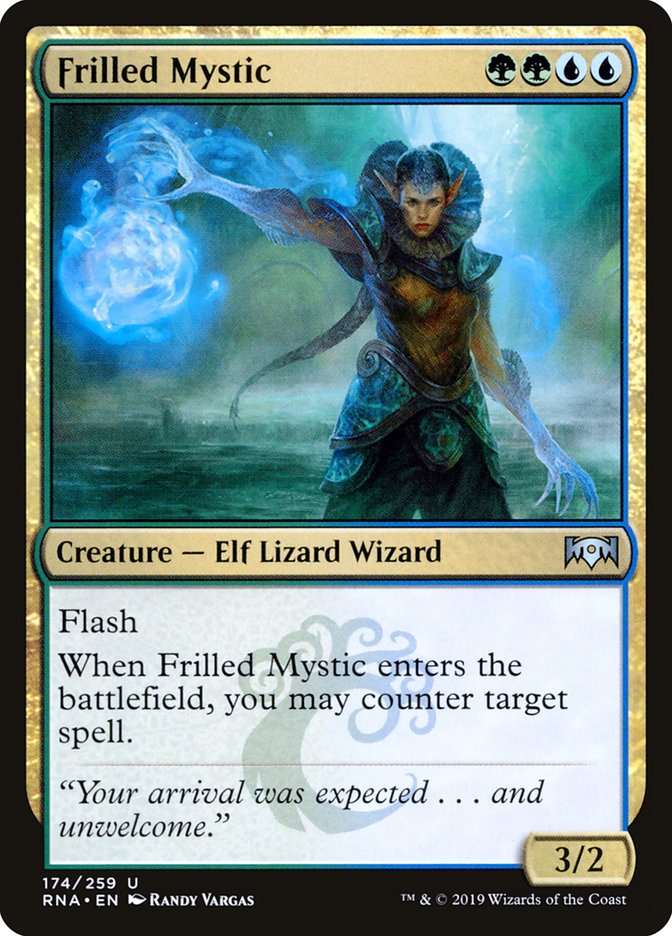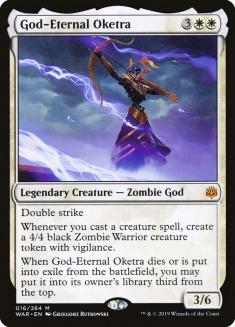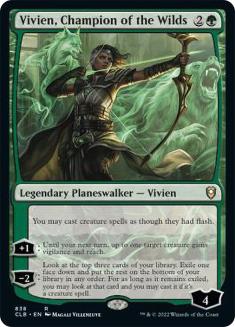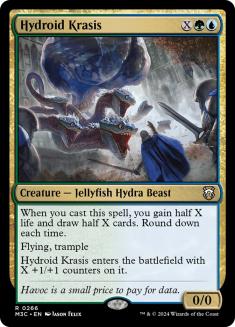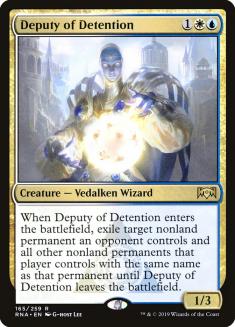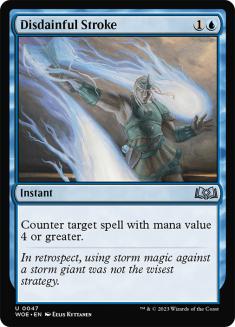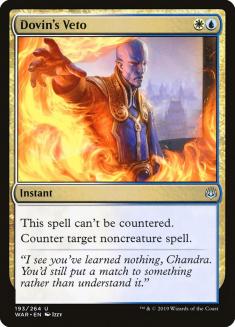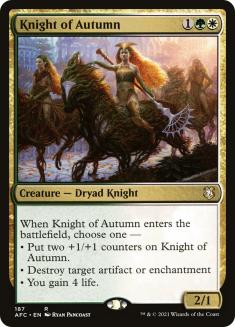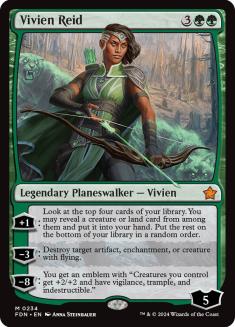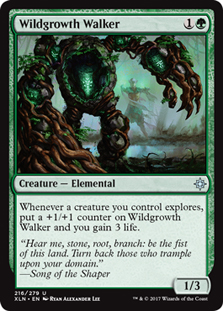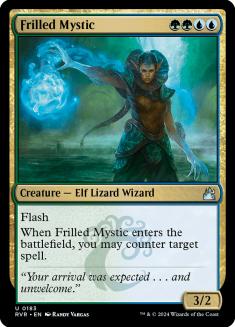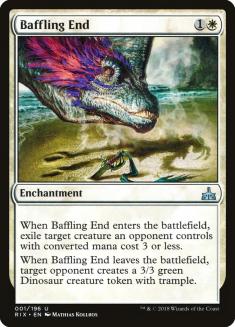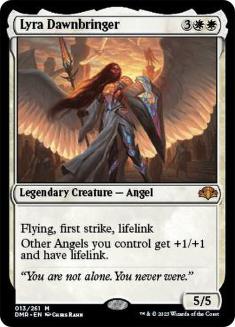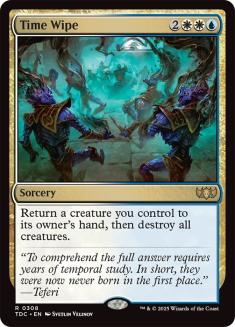Week 1 of War of the Spark Standard has come and gone, and despite a huge influx of powerful cards, the top-performing decks are mostly things we have seen before. There was one newcomer to emerge into the metagame, as Bant Midrange placed two copies in the Top 8 of SCG Richmond. Today I’m going to talk about why I believe Bant did well last weekend, how it is looking to shape up against the field, and what possible changes you can make to stay one step ahead going into next week.
Creatures (29)
- 4 Llanowar Elves
- 2 Shalai, Voice of Plenty
- 2 Knight of Autumn
- 2 Deputy of Detention
- 4 Hydroid Krasis
- 4 Growth-Chamber Guardian
- 4 Frilled Mystic
- 4 Incubation Druid
- 3 God-Eternal Oketra
Planeswalkers (7)
Lands (24)

Creatures (29)
- 4 Llanowar Elves
- 2 Shalai, Voice of Plenty
- 2 Knight of Autumn
- 2 Deputy of Detention
- 4 Hydroid Krasis
- 4 Growth-Chamber Guardian
- 4 Frilled Mystic
- 4 Incubation Druid
- 3 God-Eternal Oketra
Planeswalkers (7)
Lands (24)
Sideboard

Examining the Why
Going into last weekend, the competitive world was abuzz with talk about how Simic Nexus had been pushed into the top of the Standard heap with the new additions of Blast Zone and Tamiyo, Collector of Tales. The other top dog that you had to have a plan for was Esper Control, which had gotten a smattering of powerful spot additions and already boasted one of the most powerful card advantage engines in recent Standard history with Teferi, Hero of Dominaria and Search for Azcanta.
It was paramount that you build your deck with these strategies in mind, and the primary strength of Bant Midrange is just how good it is at combating these two targets. For a deck that is mostly a pile of efficient creatures, Bant Midrange has an impressive laundry list of ways to disrupt your Simic Nexus opponent from being able to combo. Teferi, Time Raveler has gotten a lot of press for being incredibly difficult for Simic Nexus to overcome, as he shuts down Wilderness Reclamation from producing any relevant mana while also nullifying any Fogs or countermagic your opponent may have, but that is just the tip of the iceberg.
Frilled Mystic also shines in the matchup. Most of the cards worthy of being countered in Simic Nexus are four mana or more, allowing your Mystic to trade evenly on mana while advancing your battlefield. Knight of Autumn and Deputy of Detention give you play against resolved enchantments, and these can be particularly devastating when flashed in thanks to Vivien, Champion of the Wilds’s passive ability. Overall, when you combine a critical density of interaction with a passable clock, I think you’ve got all the ingredients for a great matchup.
Many of your best cards against Simic Nexus also shine while playing Esper Control, with the seven maindeck planeswalkers being key. Vivien allows you to navigate around sweepers, hide your intentions when holding up a Frilled Mystic, and of course generate relatively consistent card advantage. Teferi again seriously hinders your opponent’s gameplan, invalidating their countermagic while forcing them to play on your terms.
How I’d Move Forward
The deck naturally doesn’t have exclusively good matchups, and I’ve found how Bant Midrange plays against Mono-Red to be incredibly worrisome. Almost all your early plays are susceptible to Shock and other cheap removal, and when your battlefield is consistently kept clear, your planeswalker package and Frilled Mystic quickly become incredibly dead cards. With Mono-Red being the new Public Enemy No. 1 after an exceptional showing at SCG Richmond, I’d like to suggest some drastic changes to the archetype for those planning to play it this weekend.
Creatures (29)
- 4 Llanowar Elves
- 4 Wildgrowth Walker
- 4 Merfolk Branchwalker
- 4 Jadelight Ranger
- 2 Deputy of Detention
- 4 Hydroid Krasis
- 4 Frilled Mystic
- 3 God-Eternal Oketra
Planeswalkers (7)
Lands (24)

Moving to the explore package comes with a cost, and the primary victim is Frilled Mystic. Without the adapt creatures, you lose much of your ability to disguise your desire to cast the Mystic, and the punishment for your opponent playing around your counterspell is exacerbated when you don’t have those “free” mana sinks available in your deck. Still, Vivien can cover these issues to some extent and Mystic doesn’t become terrible in the matchups that you want the card the most, namely control and Nexus of Fate strategies.
Sideboarding
VS Simic Nexus
Out:
In:
Your top objective is to secure some pressure on the battlefield. Without the ability to end the game, Simic Nexus is resilient enough to fight through any disruption you can offer, so you really want to see an explore creature in your opening hand. God-Eternal Oketra and Hydroid Krasis get the axe because they simply require too much mana to get onto the battlefield. Taking your shields completely down in the critical window from Turns 4 through 6 simply is not worth it in my experience.
VS Esper Control
Out:
In:
Three-mana planeswalkers are incredibly key in the sideboard games, as you’re leaning on them to be your answer to Thief of Sanity without Deputy of Detention in your deck. When Thief doesn’t show up, your goal is to get a moderate amount of pressure on the battlefield and then never tap out. You have all the tools to win in this matchup, but not putting on the correct amount of pressure can quickly lead to your house of cards collapsing.
VS Mono-Red Aggro
Out:
In:
My biggest piece of advice in this matchup is to try to hold your Wildgrowth Walker until you can cast an explore creature in the same turn. Some hands will dictate that you run it out, but in absence of the four-mana engine cards from Mono-Red, a six-point life swing can be all you need to close the game. One other thing to note is knowing when you’re able to hold onto extra creatures, as a trigger or two off a mid-game Oketra is crucial to give yourself the ability to clock your opponent before they can find lethal burn.
VS Mono-White Aggro/Azorius Aggro
Out:
In:
While you’re still susceptible to the best white-based aggro starts, there’s a lot to like about this matchup. Deputy of Detention is excellent interaction, the explore package can grind the ground game to a halt, and they have little recourse against Oketra once the game has slowed.
VS Sultai Midrange
Out:
In:
While this matchup hasn’t come up a ton with Sultai being on the decline, I would imagine that it is difficult. Other than Oketra, your creatures are susceptible to being wiped away with Find // Finality, and without any instant-speed interaction you’re particularly vulnerable to Hostage Taker. The key to success is riding your high-powered threats to victory, so aggressively look for planeswalkers and Oketra while doing your best to not play too far into sweepers.
While Bant with the Wildgrowth Walker package may not be the long-term answer for the archetype, I do believe it’s an important angle to explore with the format likely to shift towards aggro in the upcoming week or two. Even if you choose to play the “traditional” build with the adapt creatures, your sideboarding plans won’t be massively changed and you can still use the guide above as general help while playing the deck.



